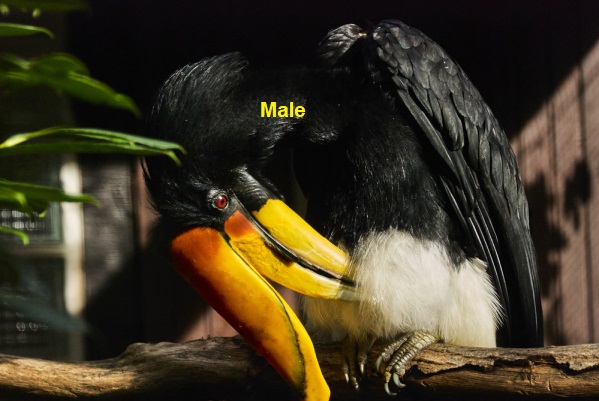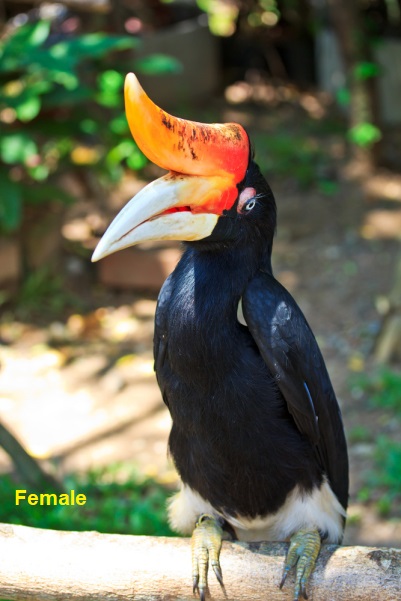

The Rhinoceros Hornbill(Buceros rhinoceros) is the national bird of Malaysia. Like almost all hornbills the Rhinoceros Hornbill has a “horn like” casque on its bill. The Rhinoceros Hornbill is classified in the order Bucerotiformes and the family Bucerotidae.
Physical Characteristics
An adult Rhinoceros Hornbill’s body is mostly black; its thighs are white, the tail is white with black barring. Males have black rimmed red eyes, and females have red rimmed white eyes.
Juveniles have a smaller bill. Juveniles take a period of time to grow a casque. Juveniles have blue-gray eyes.
| Genus | Buceros |
| Species | B. rhinoceros |
| Binomial Name | Buceros rhinoceros |
| Length | 80-90 cm(2’7.5”-2’11.4”) |
| Wingspan | Up to 1.5 m(4’11.1”) |
| Weight | 2-3 kg(4.4-6.6 lbs.) |
| Diet | Omnivore |
| IUCN Status | Vulnerable |
Range and Habitat
The Rhinoceros Hornbill Inhabits forests in Southern Thailand, Peninsular Malaysia, Sumatra, Borneo, and Java.
Breeding
Rhinoceros Hornbills usually nest in tree cavities, but occasionally a pair nests in a cavity in a cliff. The female incubates 1 to 2 eggs for 37 to 46 days. The female is fed by the male while she is incubating the eggs. When the eggs hatch the male will supply the chicks and their mother with food. The Rhinoceros Hornbill is monogamous(mates for life).
Diet
Rhinoceros Hornbills eat fruit, insects, lizards, tree-frogs, smaller birds, and bird eggs.
Fun Facts
- A Rhinoceros Hornbill’s nest cavity can reach heights up to 15 meters(49 feet, 2.6 inches).
- Rhinoceros Hornbills can live for up to 35 years.
- Rhinoceros Hornbills can be found in mountain rainforests up to 1,400 meters(4,593.2 feet).
